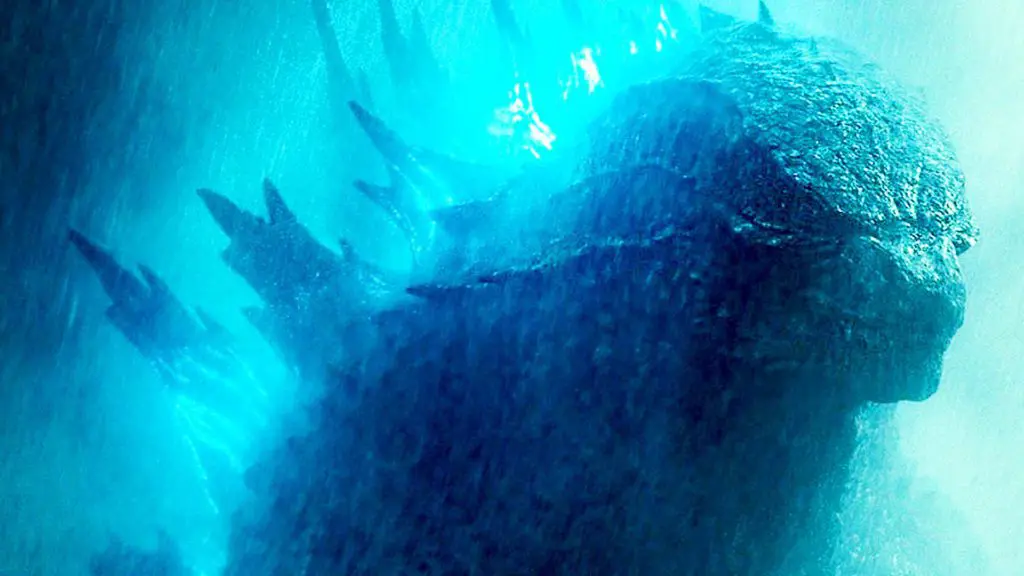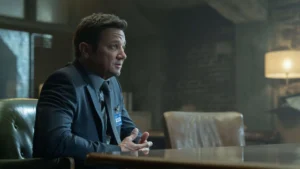Summary
This movie is full of beautiful images of monsters that we all recognize, with no clear intention of what we should feel about them. Even those who argue for this movie do so from the position that we shouldn’t have expected more.
When I was eight years old, I was picked on in school for drawing Mothra in my notebook (too “girly,” I guess). I was so embarrassed that I threw my drawings away; I was too little to realize that Mothra, the peace guardian, would have been on my side. I haven’t thought about that in a long time, not until Godzilla: King of the Monsters made me feel the same way as those bullies did. It made me embarrassed to like Godzilla.
How did it do that? How did such a big, expensive tribute to material usually enacted in rubber costumes on a toy train set bring me so little joy? Truthfully, there’s great beauty in King of the Monsters. The joylessness comes from something purely American: an inability to let great beauty stand on its own without talking about it. This movie talks itself to death.
Consider this scene in the context of any large-scale epic, any film designed with even a passing intention to show us something beautiful or make us feel suspense. Godzilla is floating far out at sea; we’re watching him from an underwater window. We’re wondering if he perceives us as a threat. His spines climb and descend almost musically in a pattern of blue light. The scene is serene and intense – we wonder if he’s curious of us, afraid, or threatened. We wonder which he’ll act on. This scene contains a basic truth of Godzilla material: a cautionary tale of coolness, a balance between desiring to see the actions of powerful beings and fearing that they may turn against us, as we turned against this planet to create them. In a flash of visual storytelling, this contains the whole Godzilla idiom, the material that makes him meaningful and also pleasurable. It’s conceived with the grandness of the space anomalies in 2001: A Space Odyssey and the serenity of the aliens’ greeting in Close Encounters of the Third Kind.
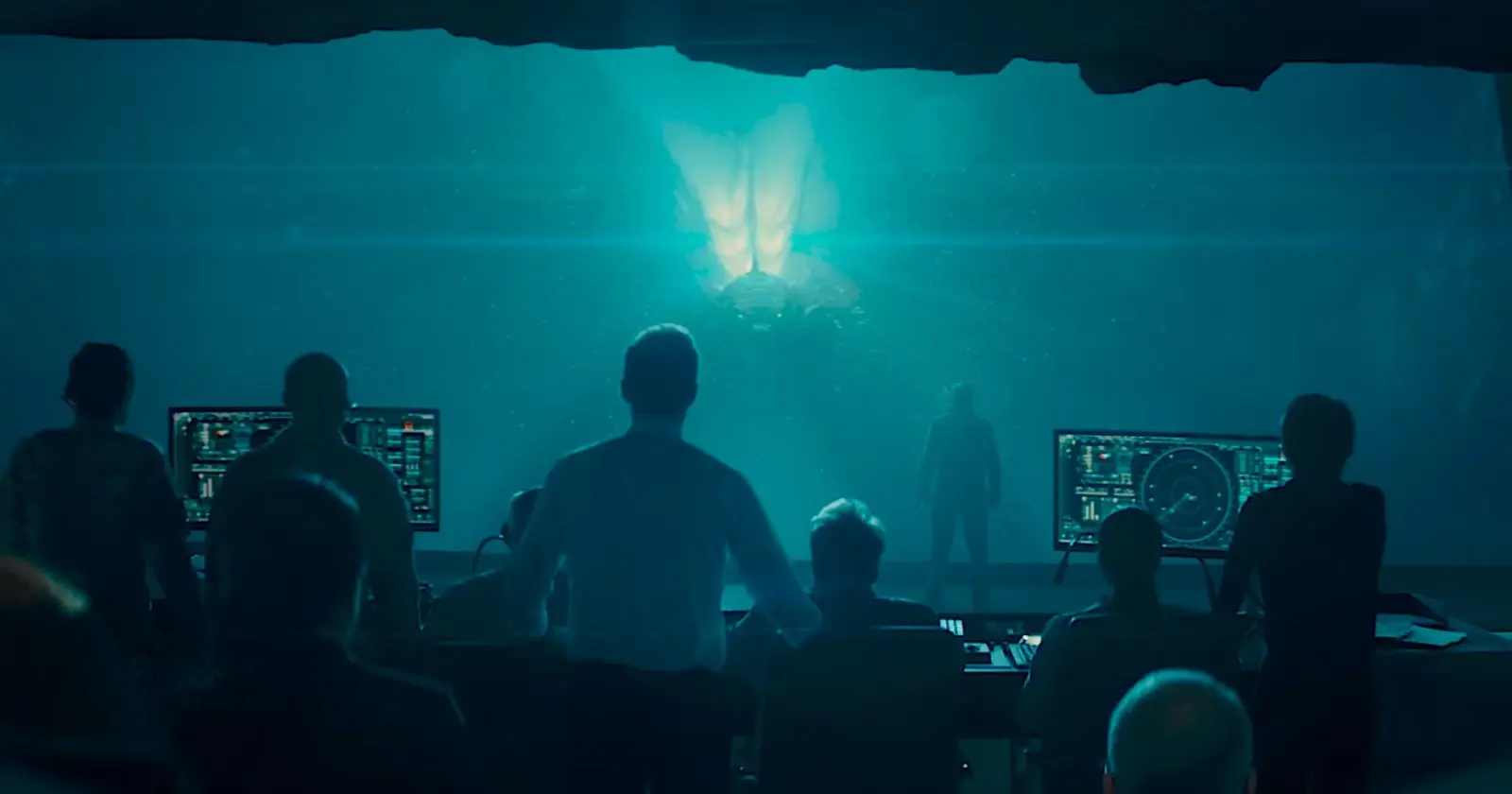
It’s a dreamy scene, but for one thing. Something happens in this scene that happens constantly in King of the Monsters. Whether you think this movie is dramatic or fun or even if its beauty is beautiful will be determined by whether or not you can ignore it. I’m talking about its commentary, its constant, unending reaction chatter. I’m talking about Bradley Whitford and various extras schmoozing around scenes of grandeur with the flippant buoyancy of the Car Talk guys. They emcee King of the Monsters and ruin it for those who want to take it seriously.
Why is this such a big deal? Who would want to take Godzilla seriously?
It’s a big deal because of what director and co-writer Michael Dougherty seems to intend for King of the Monsters to feel like, and what Gareth Edwards intended before him with Godzilla (2014). Realize that as Godzilla wafts into view in the port window and the scene threatens to be downright beautiful, someone is saying, “What’s with the light show?” “It’s an intimidation display.” “Consider us very intimidated.” “What’s he doing now?” And so on. The scene ends with a jump scare: Godzilla drifts out of their view and then BOOs! them by rushing the window. Imagine the Close Encounters aliens finishing their fanfare and then greeting us with jack-in-the-boxes.
This pattern is consistent in King of the Monsters. Unlike Edwards’ reverent Godzilla, Dougherty undercuts every grand image with an insert of unimportant commentary. This may sound like a nitpick to you, and for many people, it probably is: many American Godzilla fans believe that Godzilla was not meant to be epic (that’s probably why a TV-spot features “Mama Said Knock You Out” by LL Cool J, cheekily timed with snippets of dialogue). But the reason Dougherty’s sports commentary writing is not a nitpick is that King of the Monsters doesn’t act like B-movie camp, which is something I enjoyed in Pacific Rim and the original King Kong vs. Godzilla. It acts like it wants to be reverent towards these monsters (it calls them “Titans”) and then fails in that ambition, or perhaps snidely dismissive towards them, and then fails in that too.
This movie thinks it can advertise itself with a dreamy rendition of Clair de Lune one minute and then LL Cool J the next. It has the gall to tell us in a PowerPoint presentation that these monsters represent our inability to take care of our planet as though we’re supposed to take this very seriously, yet the punctuation of many of its scenes is a bad joke. After Edwards’ film, fans demanded a lighter movie with more jokes and more recognizable things, as they did after seeing Man of Steel. They got their wish. It’s barely possible for a sequel to Godzilla (2014) to be less appropriate for its universe. This is the Justice League of the MonsterVerse.
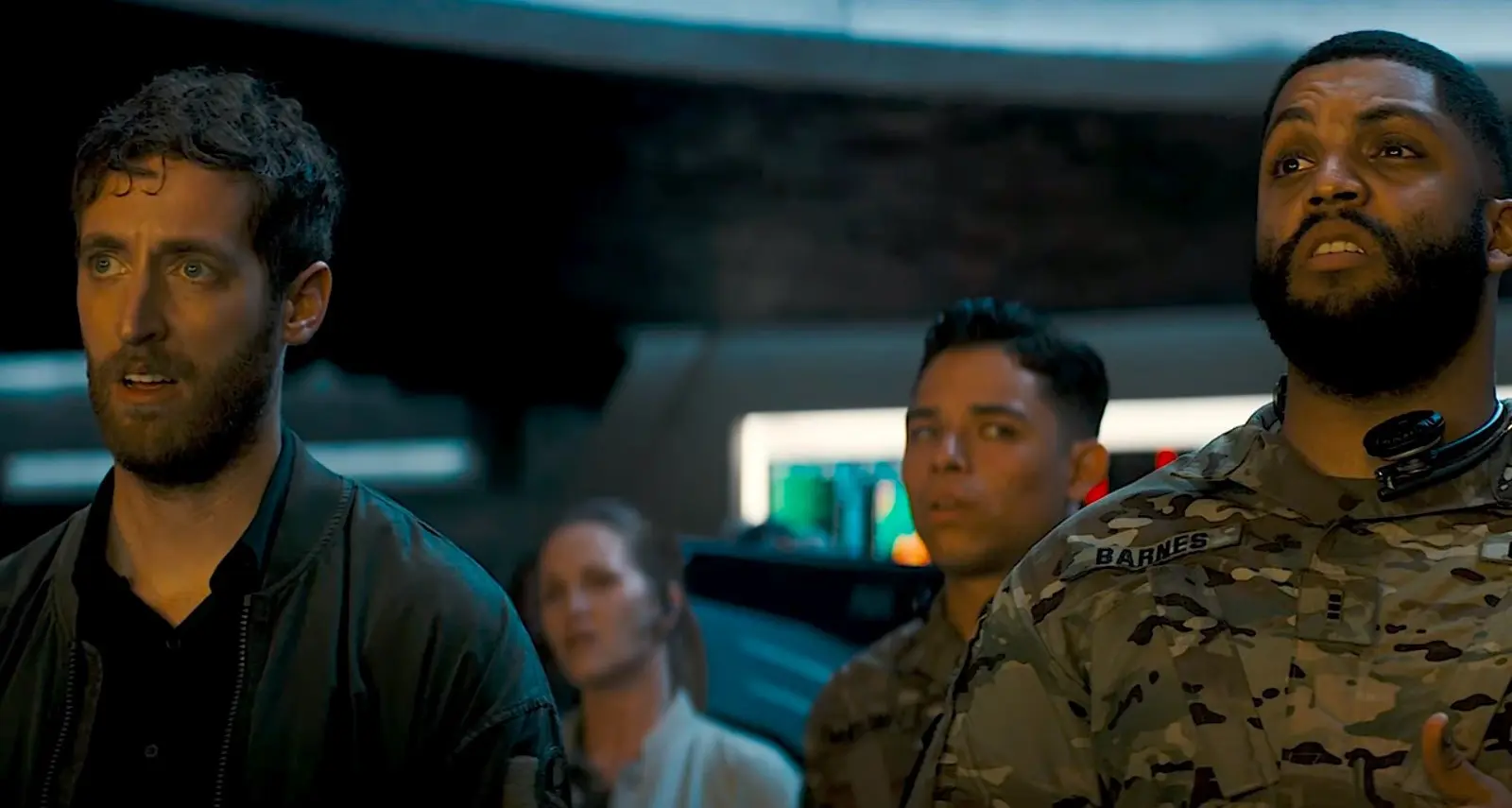
When King Ghidorah, whose name is spoken with the hushed severity of an evil spirit, rises from the ice, cinematographer Lawrence Sher (best known for The Hangover movies) does his best to get beneath him, his three heads springing out, his wings unfurling. This is Godzilla’s ancient nemesis we’re talking about, and the movie wants us to think of William Blake’s Great Red Dragon and the ancient Japanese demon Orochi and the Grecian Hydra when we see this thing. Dougherty clearly told the animators to take inspiration from nature: this Ghidorah is cobra-like and sinister. The images are working their magic.
And then (you’ve probably guessed what happens), we cut to the face of a soldier on the ground who says, “You gotta be kidding me.” Why would such a laborious effort be cut down with such a pointless joke? I can’t stress enough that it might be a nitpick in another movie, but in one whose purpose is to build an epic mythology, it is devastating. Ghidorah rears up as he’s about to debut his lightning breath and just as it leaves his mouth, we cut to another soldier so he can say, “Aw, sh**!” right before he dies. Dougherty did this in Krampus as well, going after a late-80s monster movie approach as in Gremlins or Tremors. It mostly worked in that case. But King of the Monsters isn’t like those. It’s too grand to balance crude one-liners and too self-loathing to make it through a scene without smirking.
I have a more incriminating example. A sagely researcher (Zhang Ziyi) informs the crew about this ancient evil. “They call him … ‘Ghidorah,’” she says, with the same hushed significance that Hagrid told Harry about Voldemort. What happens next, I can hardly believe. It’s the moment I felt like that little kid crumpling up his drawings. After a pause for dramatic effect, a guy says,
Did she just say, ‘gonorrhea?’
Can you imagine writing that down, not just of a property you’re trying to apotheosize but of the culture that made it, whose words are being appropriated by your script only to be spoken of with the respect of a sex slur by a drunken frat boy? Can you imagine editing that script, and leaving it in? No one in the theater laughed, as they never did in response to any of these jokes. I myself had a physical reaction, a kind of lurch, like the train beneath me stopped too fast; lines like that come after frames composed like paintings. How are we supposed to appreciate them? This was far beneath unfunny: this made me sad and embarrassed, in that way that illicit sexism in Transformers movies does.
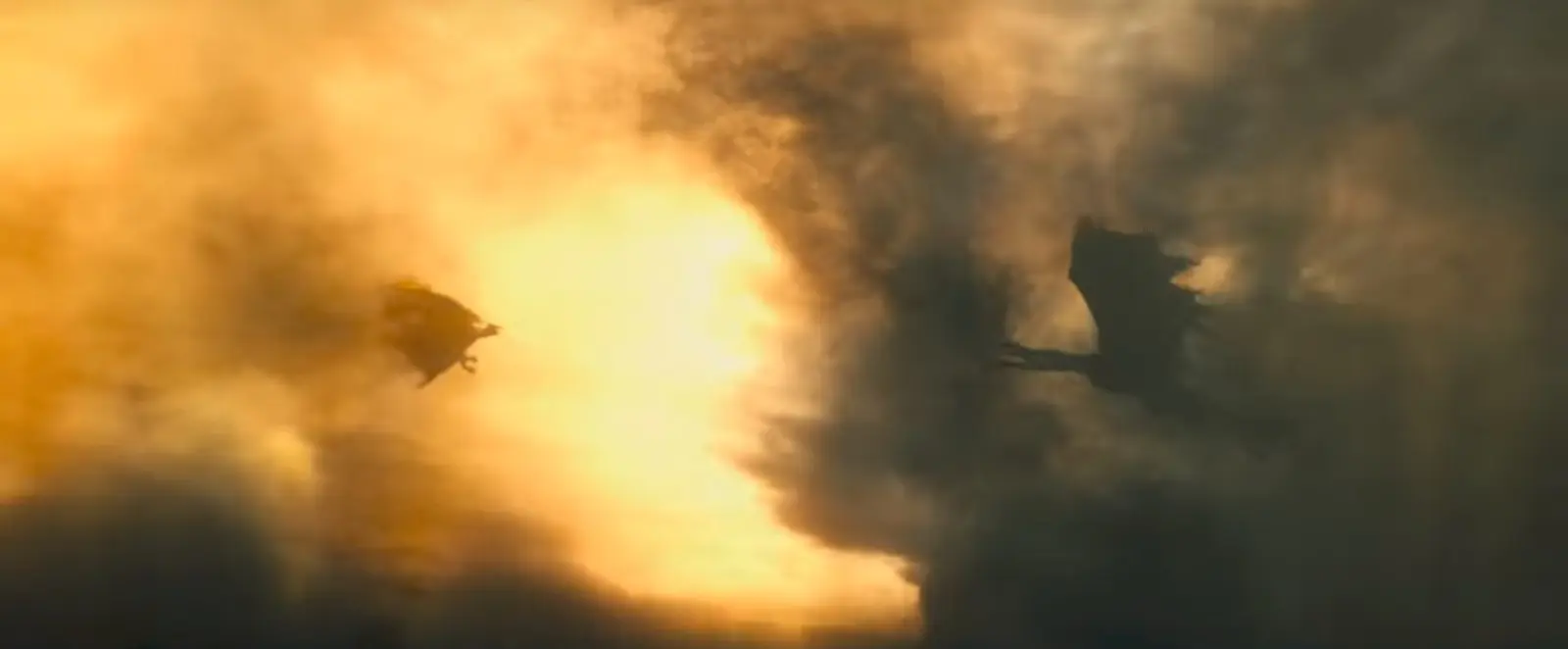
I imagine this is going to be a point of contention. It seems like most fans (eighty-seven percent, according to Rotten Tomatoes) approve of King of the Monsters, quips and all. They approve of it so much that it’s developed a reception narrative against the critics. But people aren’t fighting for the creative choices of the writer/director in making these decisions, as they have with Zack Snyder: they’re fighting for the right of Godzilla films to not be any better than those choices. They’re saying: “Who expects good drama from a GODZILLA MOVIE?!” I’ve seen it on Twitter now countless times. It’s so essential to understanding my perspective on this movie that I have to address it.
If I responded to the complaint, “Who expects good drama from a DINOSAUR MOVIE?!” with a reminder that Jurassic Park exists, I believe the point would be well-taken. That movie not only had visceral monster action, but it had memorable, relatable characters with motivations that were clear and organic. They defied their movie’s PowerPoint presentations of plot, just as they do in Gojira, Shin Godzilla, and, to some extent, Godzilla (2014).
Consider that the T-Rex in Jurassic Park has approximately the same screen-time as Edwards’ Godzilla. The studio’s solution to people’s complaint for more Godzilla is apparently to increase that number. But as Jurassic Park proves, the solution to the drama problem, the problem that those few minutes (around seven) didn’t feel as potent as they did in Spielberg’s film, is to make the number more effective with pacing, well-written exchanges, clear motivations, and narrative construction. King of the Monsters ignores all of these things in favor of its ragtag tone and bummy sensibilities, throwing as much at the screen as possible in order to bluff people into giving in to it. I can’t help but think it does so because we asked it to.
So this movie is overflowing with monsters, with Godzilla appearing in seconds. That’s supposed to be Warner Bros. doing us a favor; those who want nothing more than that should be happy. But is it too much to ask to have a balance between build-up and payoff? King of the Monsters admirably tries to build up its other creatures and succeeds in part because of some admirable cinematography. But it has to do so within the incredible constraints of what fans hoped to see, appeasing us with jokes and references, throwing its characters across the globe for another tonally inconsistent set-piece. It’s like the Godzilla version of Deep Blue Sea if Edwards’ slow-broiled pacing is comparable to Jaws. No matter how little he was on-screen, the effect was so much more epic when there was some build-up.
Though King of the Monsters is made with a surplus of spectacle, there’s far less respect in it. It contains little of Edward’s ingenious understanding of space or Godzilla (2014) cinematographer Seamus McGarvey’s ability to shoot a computer-generated thing as though it’s huge and heavy. There’s much less scale in King of the Monsters and no equivalent to Edwards’ brilliant bridge scene or the heavy fight among the buildings against the MUTO. Mothra hatches in such a way that it’s difficult to gauge her size; compare it to the long shots of the MUTO hatching in Godzilla, with the frames constructed strategically with size references. A few shots from the ground aren’t enough: we need some tracking shots sometimes, some long, thought-out frames to get invested in the enormity of these things if that’s truly the goal. This is why the chase between Rodan and the fighter planes is so enthralling. You can see his speed and feel his awesome size; his brutality is put to scale. It’s easily the most entertaining sequence in the film.
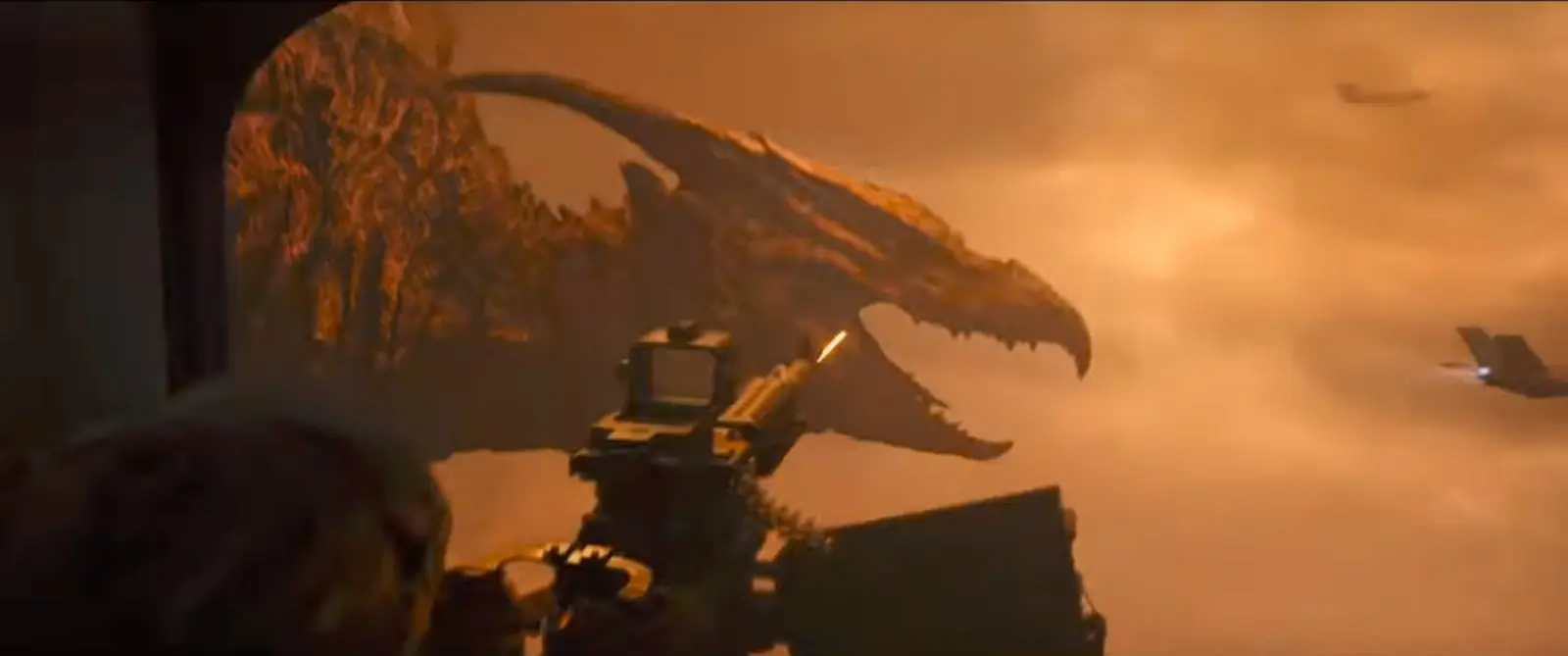
The awe of McGarvey’s work was in consistently putting us in the context of size; his monsters were monoliths. Despite the fact that Drs. Graham (Sally Hawkins) and Serizawa (Ken Watanabe) are double-teaming in King of the Monsters to tell us that this is still true, the actual feelings don’t materialize. It’s fun to some extent to watch Godzilla in any capacity, but there are times in King of the Monsters (one particularly where he breaks into a sprint) that he has that janky movement unique to computer models; I lost the impression of his hugeness that all Godzilla movies need in order to work. Dougherty digs up the old Ifukube march but it’s in service to much less inspiring fakery than we had before. Under Edwards’ watch, we could feel the march without hearing it.
That’s because Edwards has Serizawa’s respect for this material. He placed his people within seeing distance of myths, and they faded to the background because of it. Now in Dougherty’s script, they’re essential: we wanted the human characters to be more interesting, remember? How do they fair?
Though there’s a hidden core to this story, involving parents (Vera Farmiga and Kyle Chandler) reconciling with their inability to sacrifice themselves to do better by their daughter (Millie Bobby Brown) as the monsters are willing to sacrifice themselves to save the earth, it’s very hidden. It’s hidden beneath people spouting their backstories in “movie lines” and switching their motivations instantly. They go through confusing betrayals and reconciliations and do so through dialogue that sounds like first draft writing. Why would a movie five years in the making contain dialogue that sounds like a placeholder for the punch-up? These people are so unimportant that in a flurry of dark action, a monster kills a principal character and I couldn’t tell what happened. I assume that Dougherty knew this because he opens the next scene with that character’s face on a computer screen above big capital text reading, “DECEASED.”
The result of attempting so much awe within such a flimsy emotional framework is a movie strangely reminiscent at times of Roland Emmerich’s Godzilla (1998). The Japanese Godzilla films don’t make fun of the creatures’ names the way this one does or break dramatic tension with snarky asides as though they’re ashamed to be making such corny material. They always play it straight: it’s up to us to find it corny or not. It’s a very American thing to do to put the naysayers into the film itself, and it’s happened before: Whitford’s character would fit right in with Emmerich’s ensemble of crude New Yorkers cracking puns between shots of Godzilla carnage. There’s a huge difference between the somewhat annoying habit of Japanese Godzilla characters to state the obvious and the American tendency to warp it with mistimed humor into a commentary track. Godzilla is powering up in King of the Monsters and we cut to someone saying, “That lizard’s juiced!” Can’t you imagine Hank Azaria saying that in the Emmerich film?
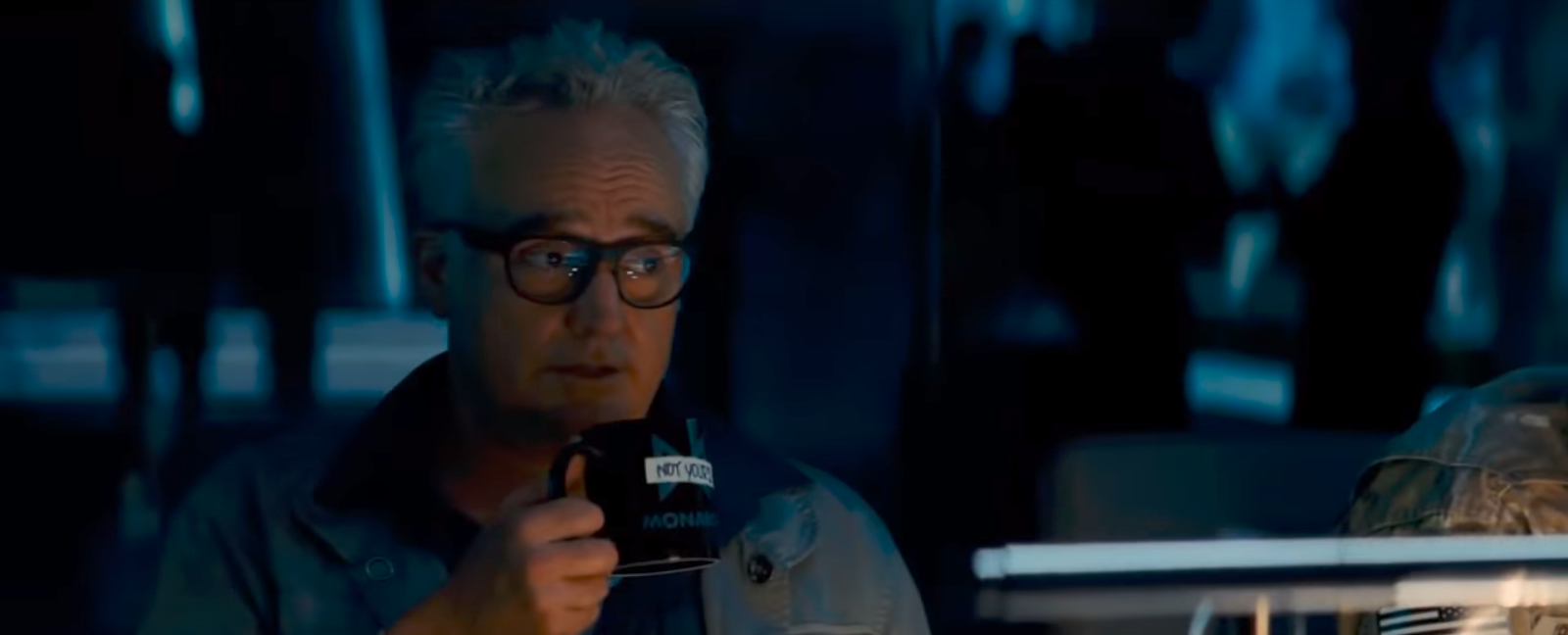
It’s almost like Dougherty aspires to recreate the magic of Godzilla (1998) with the impression that the problem wasn’t that its people were unrelatable and devoid of charisma, but that if the monsters around them were more numerous and iconic, their commentary would go over better. And that seems to be true for about ninety percent of fans. He even gets a character in a car so she can unbelievably drive away from a lumbering monster, which has been a subject of ridicule in the Emmerich film for more than twenty years.
As Dean Devlin, the producer and writer of Emmerich’s films is fond of saying, “We make popcorn movies.” He means that you’re not supposed to think too hard about them. You’re supposed to say, “Who expects good drama from a Godzilla movie?” and forgive them for a hacky script full of bad jokes, globe-trotting, confusing twists, and nonsensical motivations because they did us such a big favor by filling it with monsters we recognize. But when someone writes something as distractingly irreverent as Dougherty does, it’s difficult to give a movie a pass on those grounds (I’ve never given it to Emmerich, either).
Apparently, many Godzilla fans are willing to do so, and I don’t know if it’s because they appreciate the beauty that appears in glimpses in King of the Monsters, or because they don’t believe Godzilla deserves any to begin with. It’s difficult to notice its beautiful parts in all the chatter; it’s difficult to even see the beautiful frames popularized by the movie’s marketing when they last barely longer than one frame in the actual movie. Images gorgeous as moving frescoes skim back to the goofs in the control room with frustrating consistency. Edwards at times made a film reminiscent of Kubrick. Dougherty made the RiffTrax version.
Mothra is an earth guardian, a godlike psychic, a creature of enlightenment and peace. In Godzilla: King of the Monsters, she’s unveiled with angelic splendor beneath a waterfall. As she’s floating with painterly grace above the sea, one of the army dudes wonders out loud if “She and Godzilla have a … thing goin’ on.” There are some glimpses of beauty in this movie, fleeting instances of grandeur. But on the whole, I think my drawing was better. It had more respect in it, the kind that maybe only children have when they think of something as silly as a guy in a rubber costume as being worthy of great drama. Spielberg had to think like that when he took a shark or a T-Rex or a funny little alien and made them seem really important. So did Edwards. I worry for us if we think an STD pun is an improvement.

